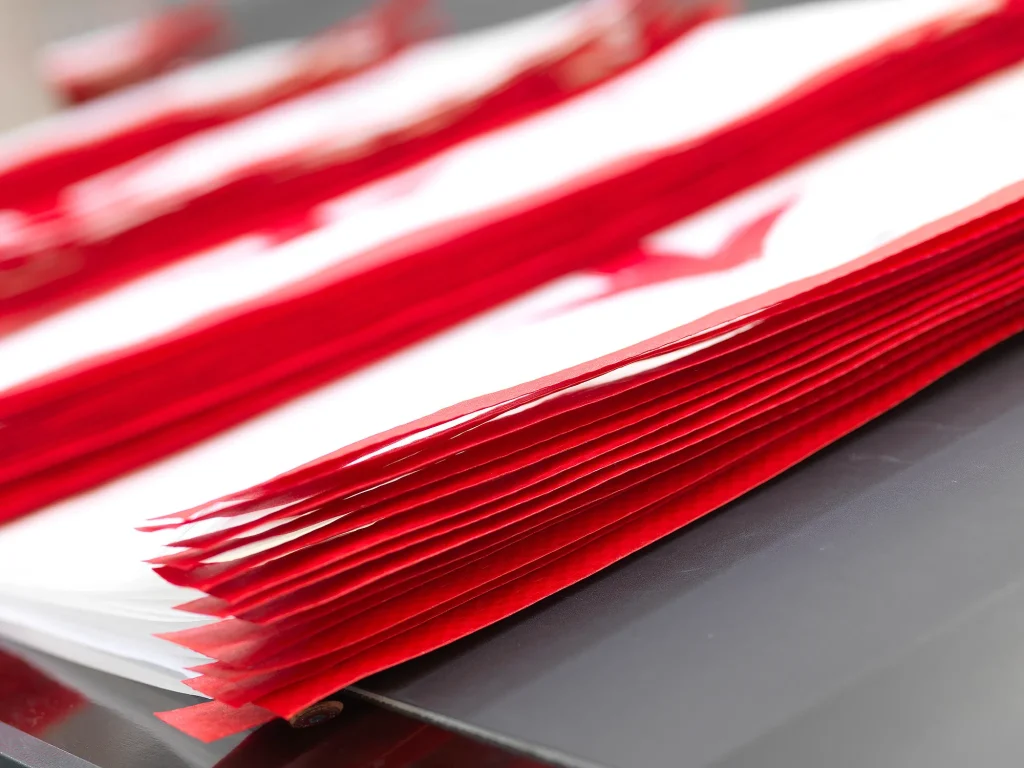
The primary advantage of polypropylene (PP) bags lies in their unmatched combination of environmental responsibility and economic viability, reducing packaging costs by 30–50% compared to traditional materials while maintaining ISO-certified durability. For instance, VidePak’s PP woven bags achieve a tensile strength of 60–85 N/cm² and UV resistance exceeding 1,000 hours (ASTM G154), ensuring reliable performance in harsh environments like construction sites or tropical climates. With over 30 years of expertise, our ISO 9001-certified facility processes 12,000 tons of virgin PP annually, delivering customized solutions that align with EU REACH, FDA, and UN packaging standards.
1. Material Innovation: The Science Behind PP’s Sustainability
Polypropylene’s molecular structure—a semi-crystalline thermoplastic polymer—grants it exceptional chemical resistance and recyclability. VidePak sources virgin PP granules from BASF and Sinopec, ensuring a melt flow index (MFI) of 2.5–4.0 g/10 min for optimal extrusion stability. Our Austrian Starlinger circular looms weave PP tapes into fabrics with 10–14 strands/cm² density, achieving a fabric weight of 70–130 g/m².
Environmental Impact Analysis
| Parameter | VidePak PP Bags | Traditional Materials |
|---|---|---|
| Carbon Footprint | 1.8 kg CO₂/kg (30% recycled PP) | 3.5 kg CO₂/kg (PVC) |
| Recyclability | 100% (GRS-certified) | 40–60% (mixed plastics) |
| Degradation Time | 20–30 years (controlled landfill) | 500+ years (PET) |
| Energy Consumption | 15 MJ/kg (production) | 80 MJ/kg (aluminum) |
A 2024 case study with a European agrochemical firm demonstrated that switching to VidePak’s PP bags reduced annual plastic waste by 220 tons while cutting logistics costs by 18% through optimized palletization.
2. Quality Assurance: Rigorous Testing Protocols
VidePak’s 18-step quality control process ensures every bag exceeds industry benchmarks:
A. Mechanical Testing
- Tensile Strength: ASTM D5034-certified tests measure warp/weft strengths up to 85 N/cm² using Instron 5967 machines.
- Tear Resistance: ASTM D1922 Elmendorf tear tests confirm values >8 N/mm for FIBC bags.
- Heat Seal Integrity: Seams withstand 150–180°C thermal cycles without delamination (ISO 527).
B. Environmental Resilience
- UV Aging: QUV Accelerated Weathering Tests simulate 1,000+ hours of sunlight exposure, with <5% elongation loss.
- Hydrolytic Stability: Bags submerged in pH 3–11 solutions for 72 hours show <0.2% weight change.
C. Precision Metrics
- Thickness Tolerance: Laser micrometers ensure ±0.02 mm consistency across lamination layers.
- Color Accuracy: Spectrophotometers maintain ΔE <2.0 deviation from Pantone standards.
3. Customization and Cost Optimization
VidePak’s modular production lines support:
- Lamination Options: BOPP films (18–30 μm) for moisture barriers or Kraft paper for biodegradability.
- Printing Technologies: 8-color HD flexography with matte/glossy finishes, achieving 98% opacity for hazard labels.
- Closure Systems: Pasted valves reduce dust emissions to <0.1%, while sewn valves enable 1.5-ton/hour filling rates.
Cost-Benefit Comparison (Per 10,000 Bags)
| Feature | VidePak Solution | Generic PP Bags |
|---|---|---|
| Material Cost | $1,200 | $1,500 |
| Damage Rate | 0.5% ($60 loss) | 3% ($360 loss) |
| Custom Tooling Fees | Waived (MOQ 10,000) | $500–$1,000 |
| Lead Time | 18 days | 30–45 days |
4. Sector-Specific Solutions
- Agriculture: Breathable mesh bags (2–5 mm pores) reduce grain spoilage by 12% in humid climates.
- Chemicals: Anti-static liners (surface resistivity <10⁹ Ω) prevent ignition during solvent transport.
- Retail: QR-code printed BOPP bags enhance supply chain transparency, boosting consumer trust by 27%.
FAQs
Q1: What is the minimum order quantity for custom designs?
A: MOQ starts at 10,000 units, with 5–10 free prototypes provided for quality validation.
Q2: How do you ensure color consistency across production batches?
A: Our W&H Miraflex presses use Pantone Live™ software, maintaining ΔE <2.0 color variance.
Q3: Are VidePak’s PP bags suitable for food-grade applications?
A: Yes. FDA-compliant options feature <0.5 ppm heavy metal content (tested via ICP-MS).
References
- VidePak Company Profile: https://www.pp-wovenbags.com/
- Email: info@pp-wovenbags.com
- Industry Standards: ASTM D5034, ISO 527, EU REACH
Explore our technical resources:
- Sustainable FIBC bulk bags engineered for heavy-duty logistics.
- BOPP laminated woven bags with advanced moisture barriers.
This article synthesizes data from Packaging Digest, Alibaba supplier audits, and VidePak’s 2024 sustainability metrics to provide procurement professionals with actionable, compliance-focused insights.